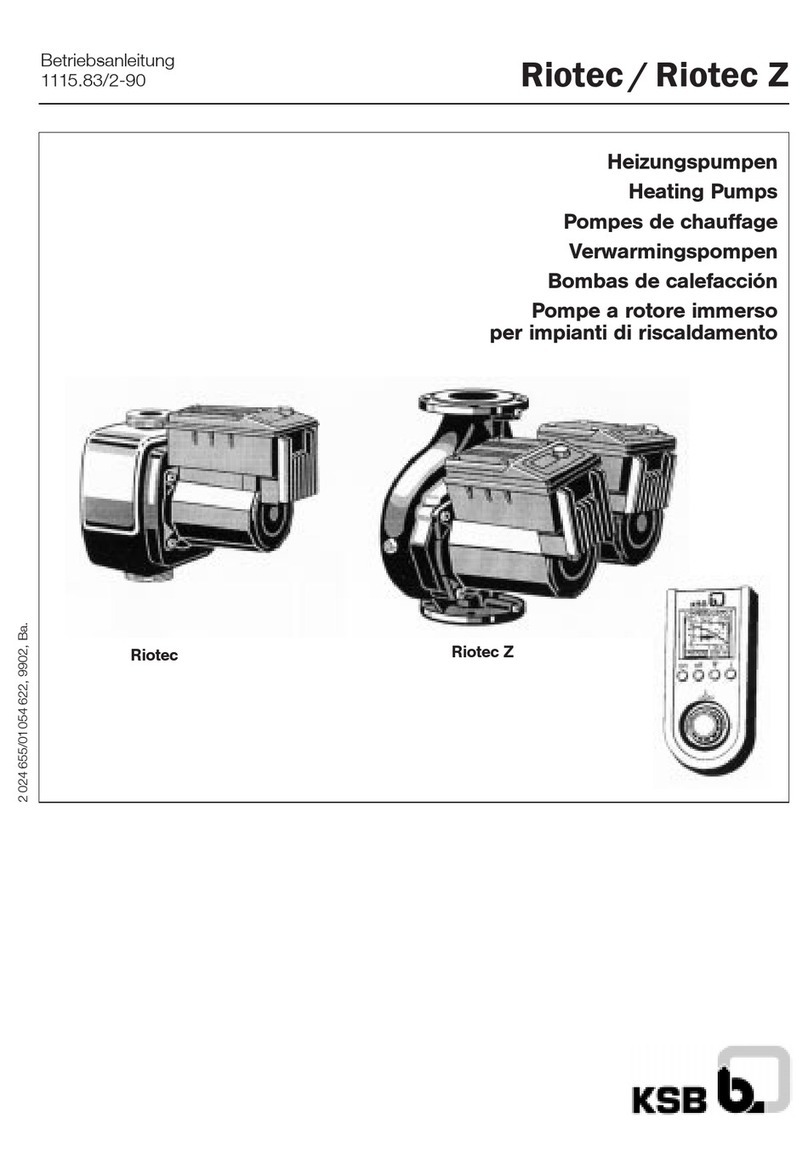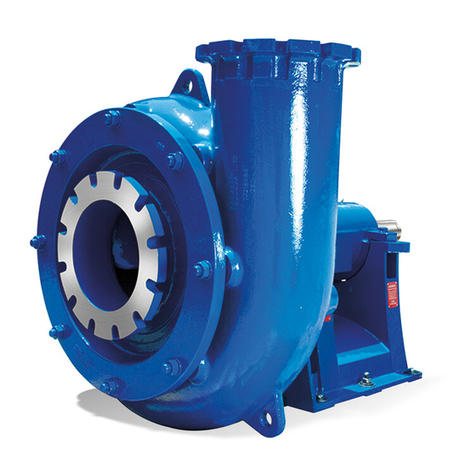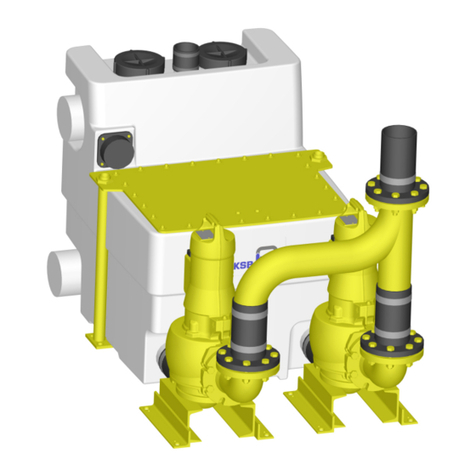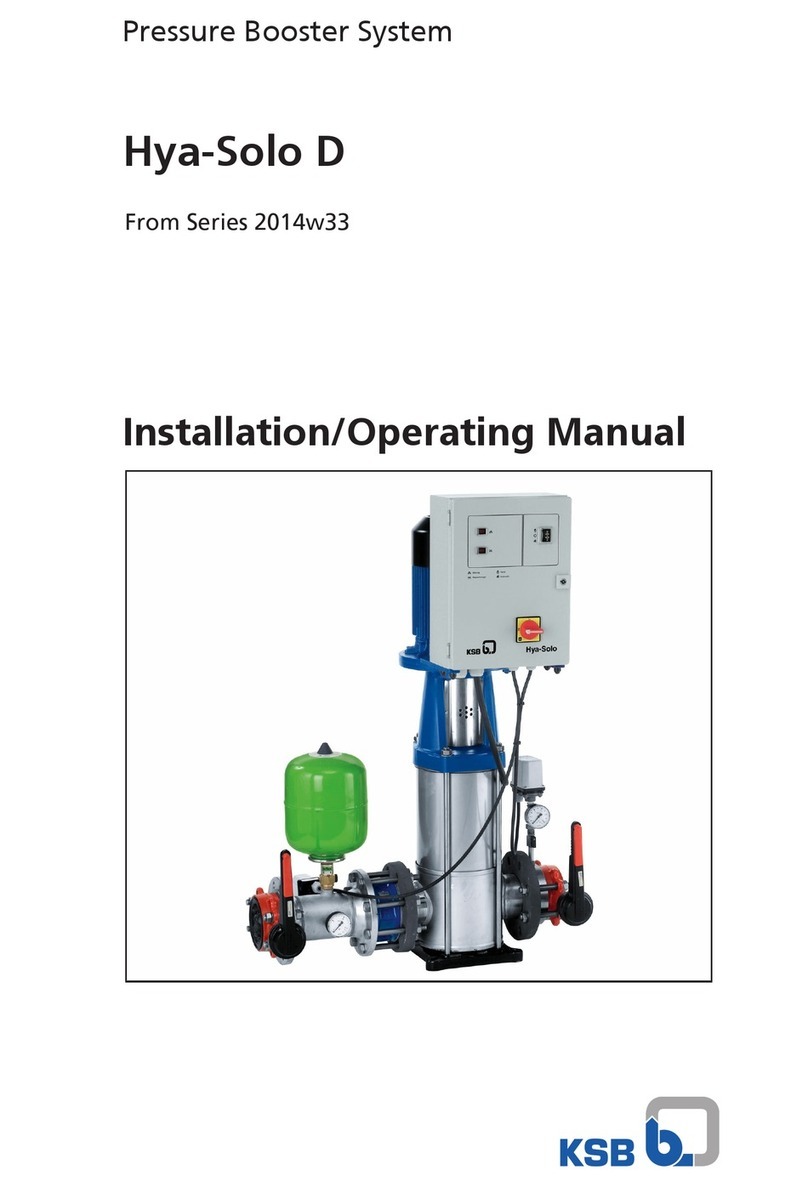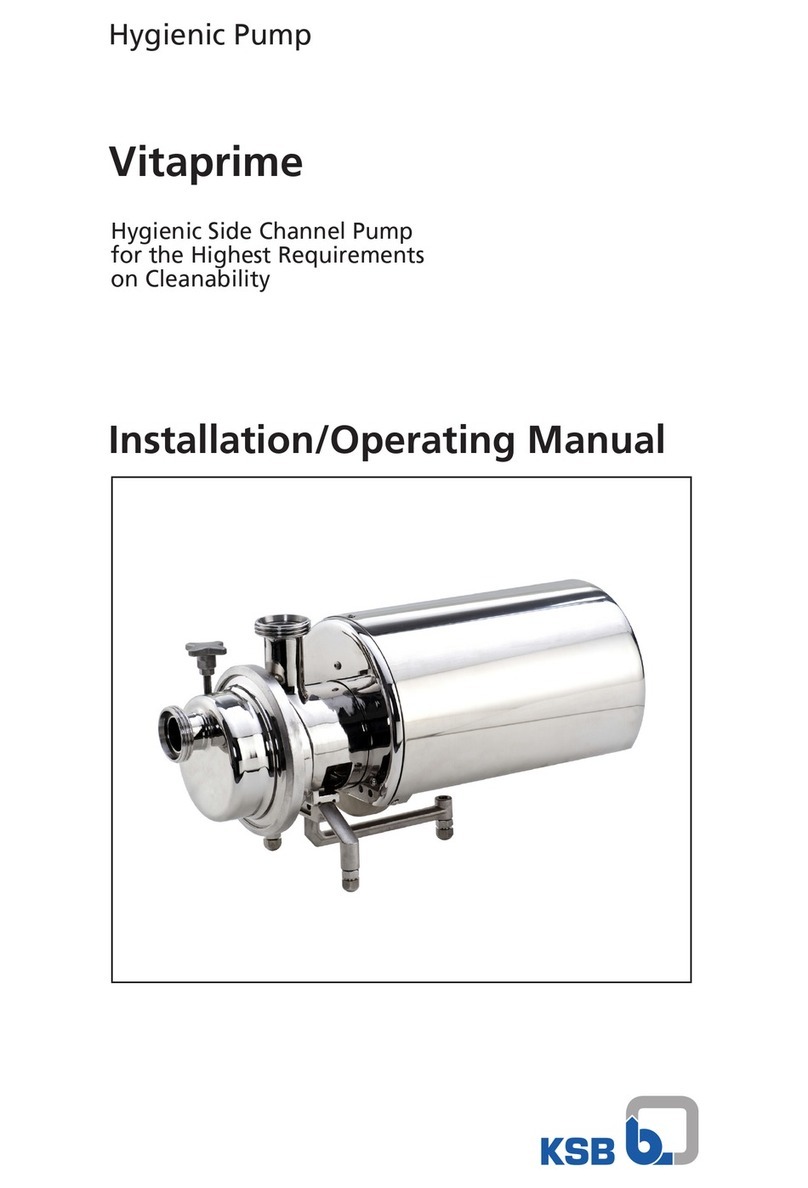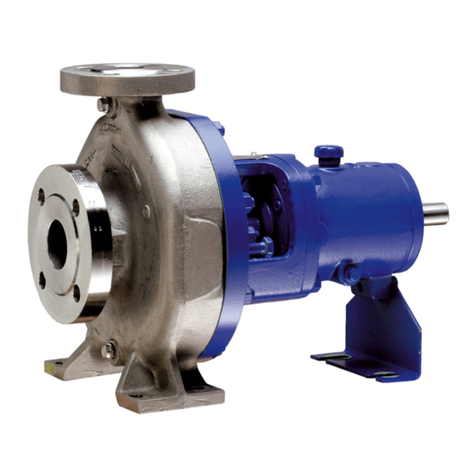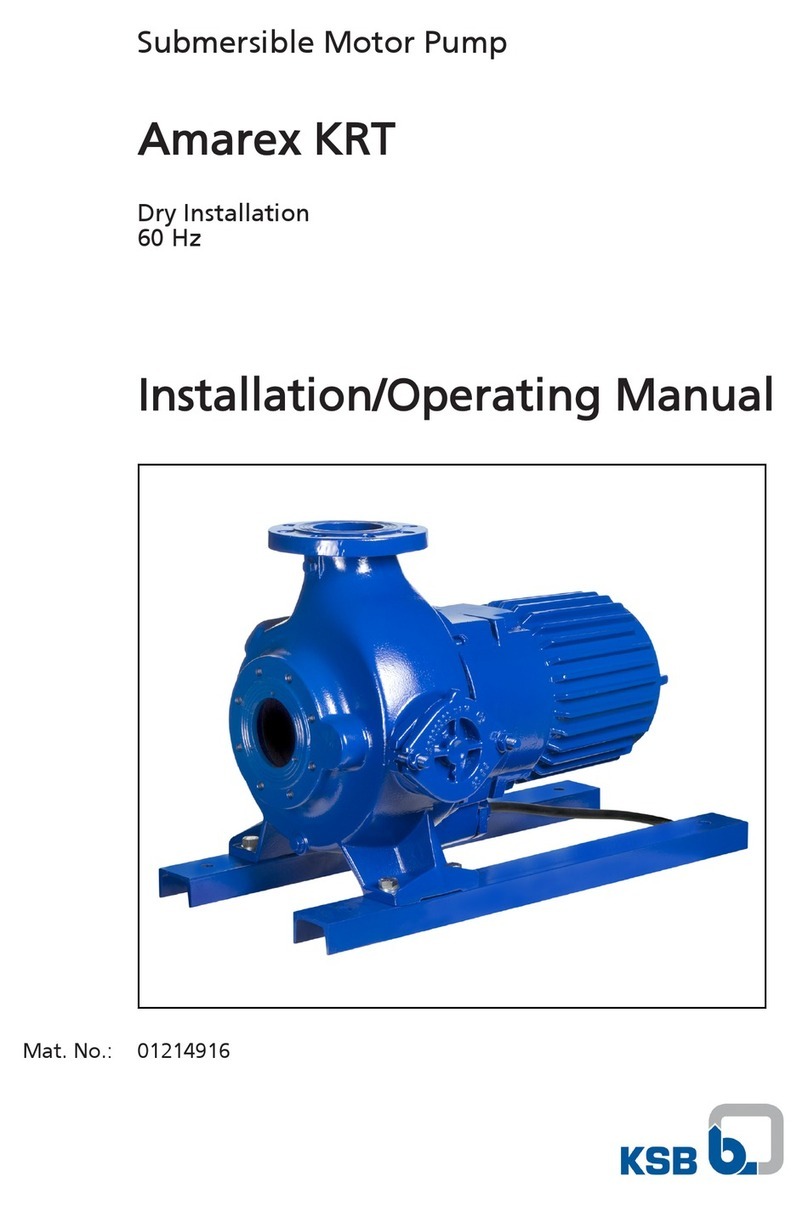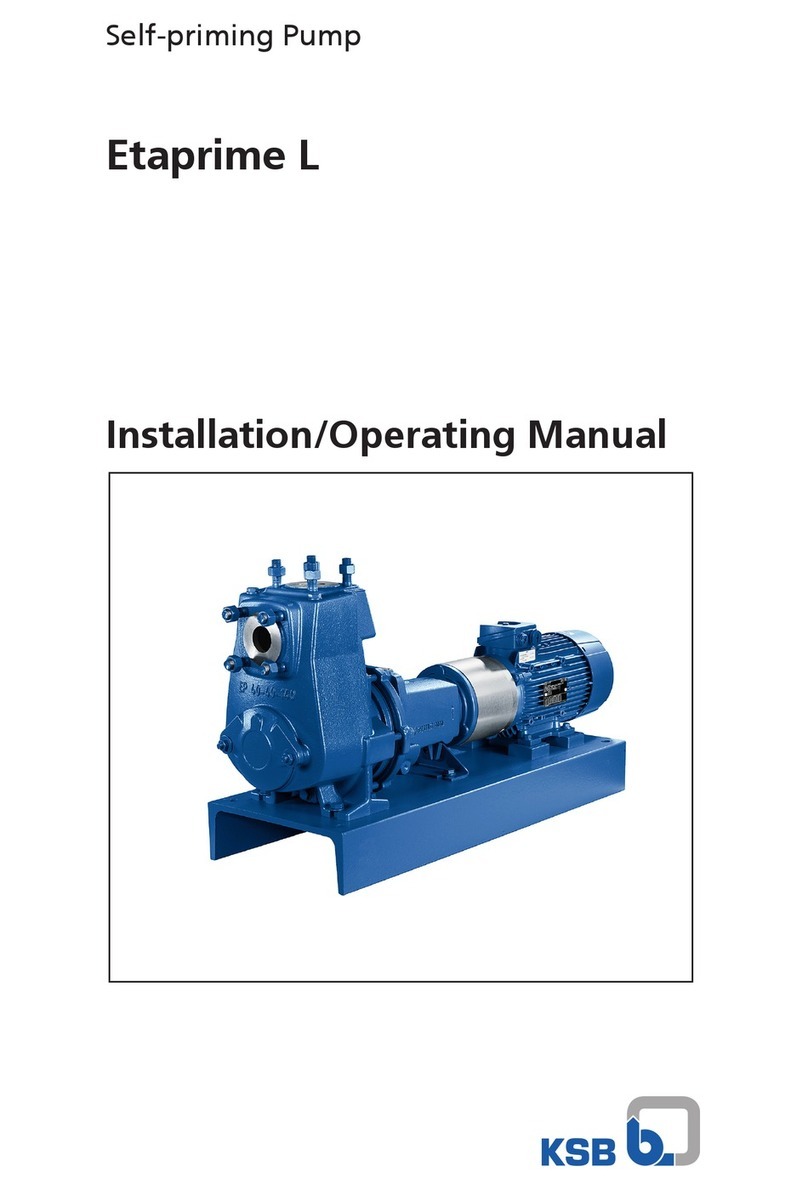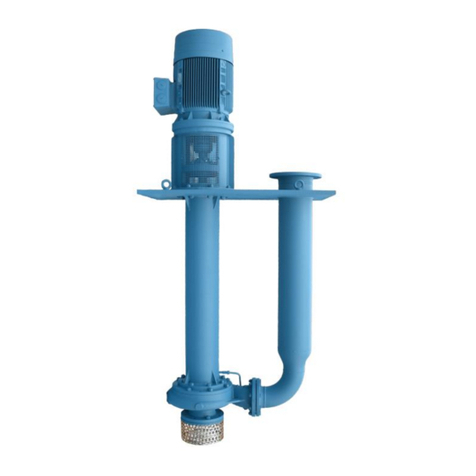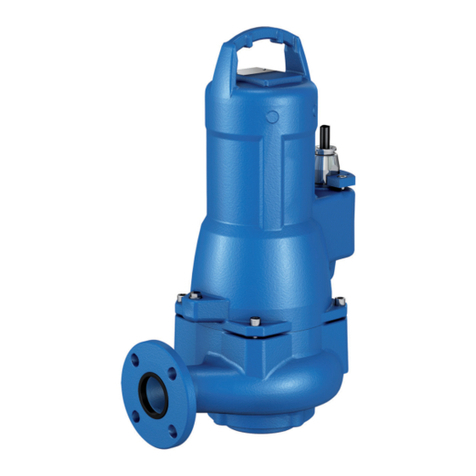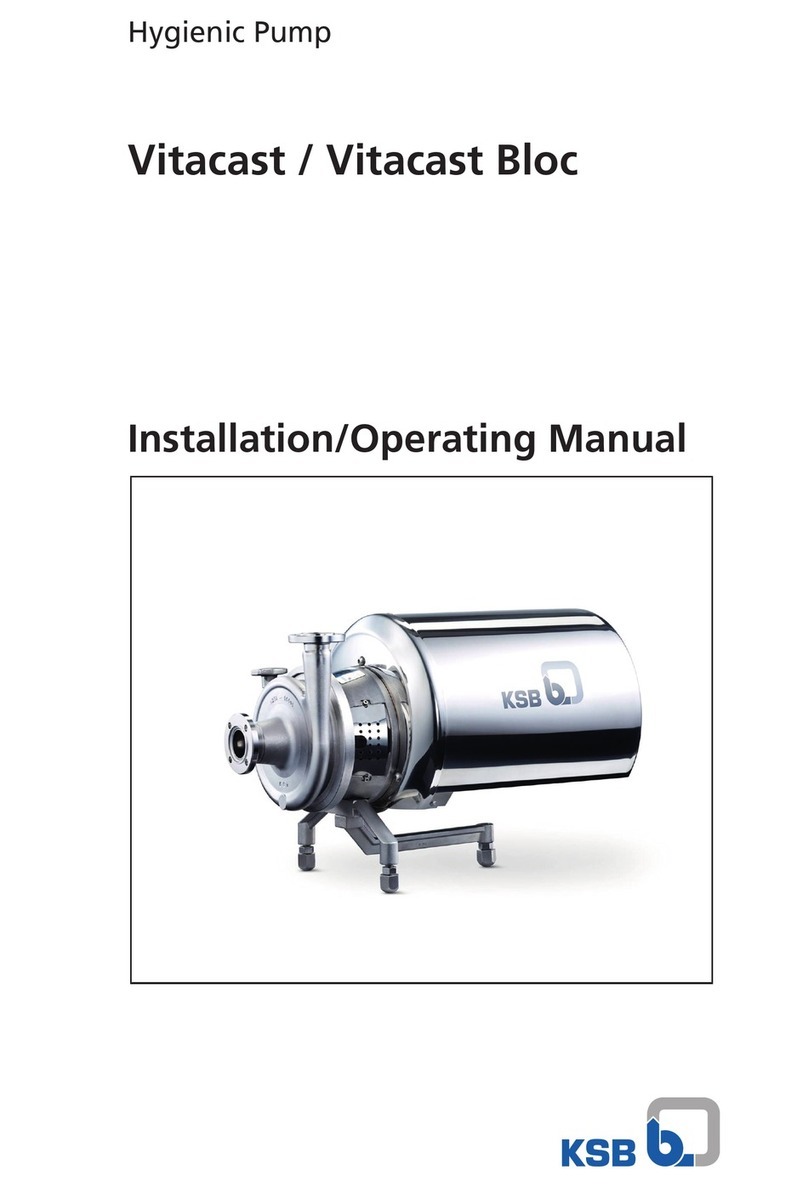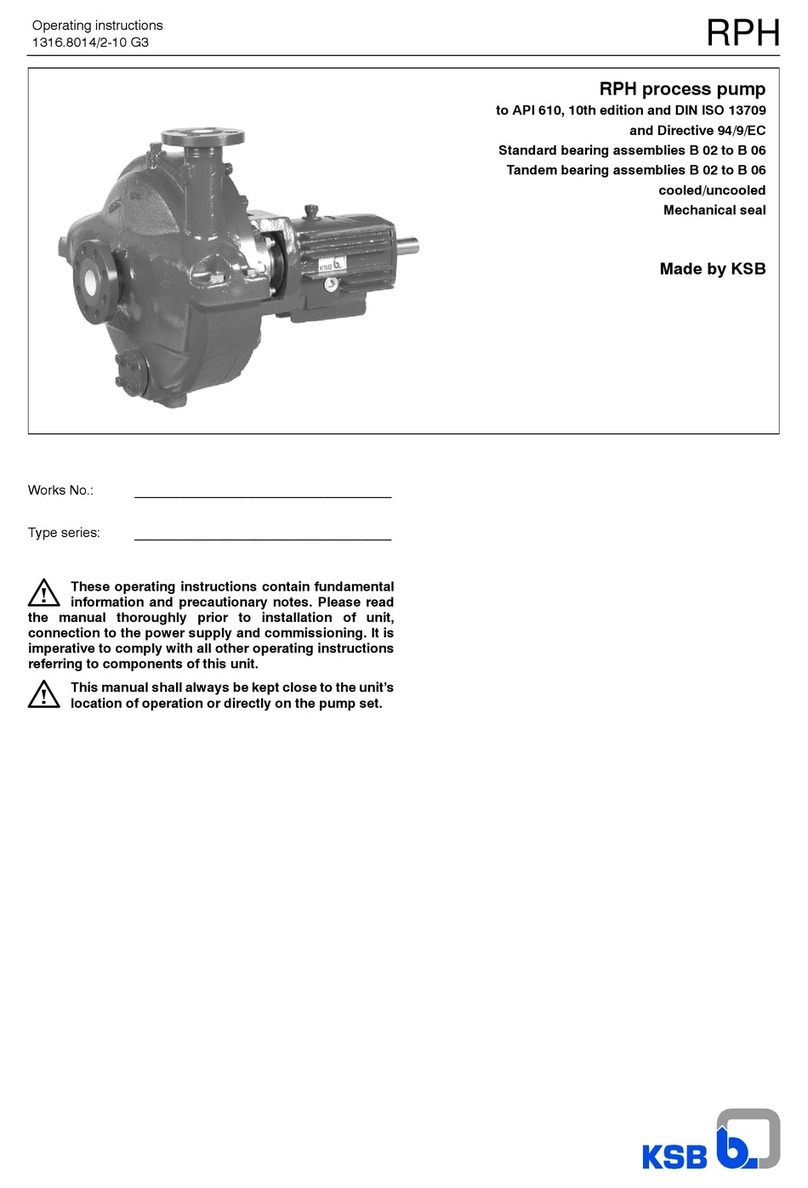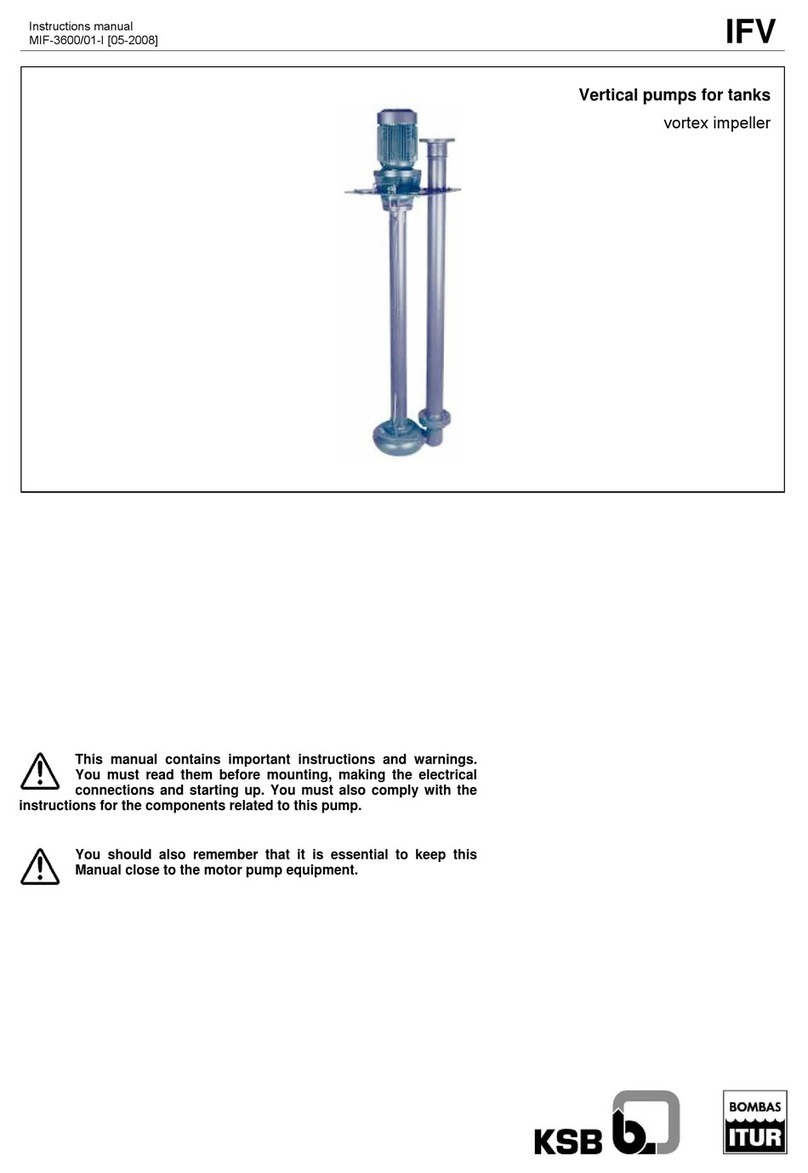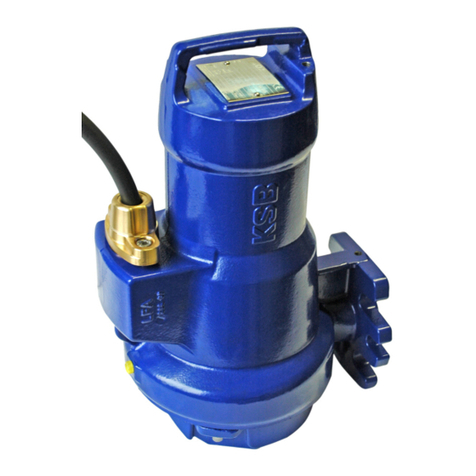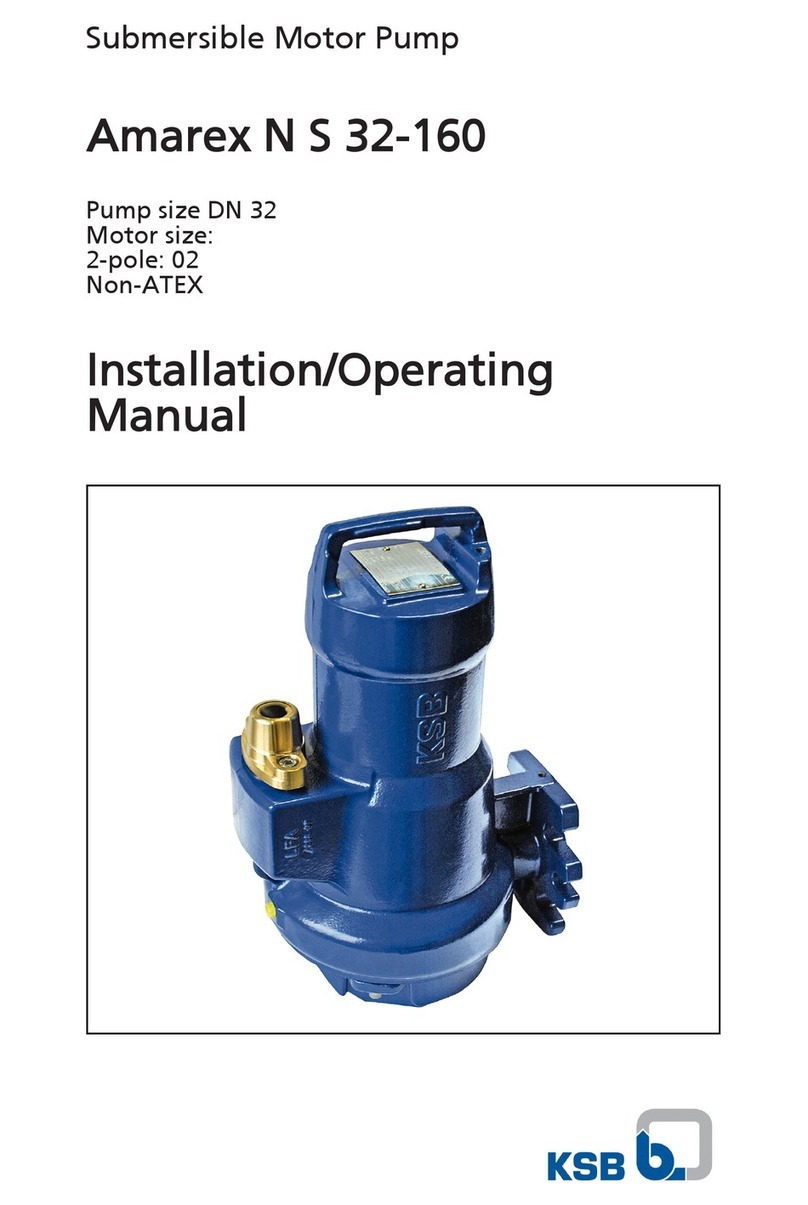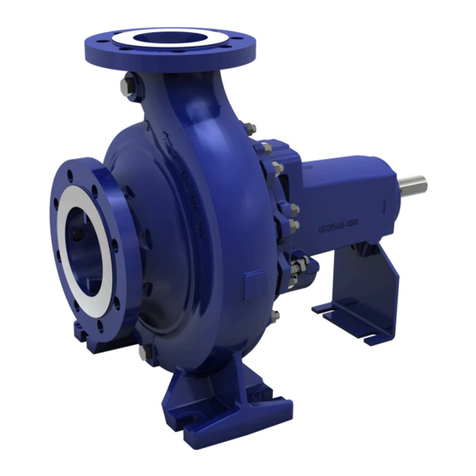
WKT
6
Additionally, the resulting rapid pressure build-up inside
the pump may cause excessive stresses on the pump
materials or even bursting.
The minimum flows indicated in section 6.4.5 refer to
water and water-like liquids. Longer operating periods
with these liquids and at the flow rates indicated will not
cause an additional increase in the temperatures on the
pump surface. However, if the physical properties of the
fluids handled are different from water, it is essential to
check if an additional heat build-up may occur and if the
minimum flow rate must therefore be increased. To
check, proceed as described in section 6.4.5.
In addition, the instructions given in section 6 of this
operating manual must be observed.
Both gland packings and mechanical seals may
exceed the specified temperature limits if run
dry. Dry running may not only result from an
inadequately filled seal chamber, but also from
excessive gas content in the fluid handled.
Pump operation outside its specified operating range
may also result in dry running.
In hazardous areas, gland packings shall only be
used if combined with a suitable temperature
monitoring device.
2.9.5 Temperature limits
In normal pump operation, the highest
temperatures are to be expected on the surface
of the pump and distributor casing, at the shaft seal and
in the bearing areas. The surface temperature at the
pump casing corresponds to the temperature of the fluid
handled.
If the pump is heated, it must be ensured that the
temperature classes stipulated for the plant are observed.
In the bearing bracket area, the unit surfaces must be
freely exposed to the atmosphere.
In any case, responsibility for compliance with the
specified fluid temperature (operating temperature)
lies with the plant operator. The maximum
permissible fluid temperature depends on the
temperature class to be complied with.
The table below lists the temperature classes to EN
13463-1 and the resulting theoretical temperature limits of
the fluid handled. In stipulating these temperatures, any
temperature rise in the shaft seal area has already been
taken into account.
Temperature class to
EN 13463-1: Temperature limit of
fluid handled
T5
T4
T3
T2
T1
85ºC
120ºC
185ºC
280ºC
Max. 400ºC *)
*) depending on material variant
Safety note: The permissible operating temperature of
the pump in question is indicated on the
data sheet. If the pump is to be operated at a higher
temperature, the data sheet is missing or if the pump is
part of a pool of pumps, the maximum permissible
operating temperature must be inquired from the pump
manufacturer.
Based on an ambient temperature of 40ºC and proper
maintenance and operation, compliance with temperature
class T4 is warranted in the area of the rolling element
bearings. A special design is required to comply with
temperature class T6 in the bearing area. In such cases,
and if ambient temperature exceeds 40ºC, contact the
manufacturer.
2.9.6 Maintenance
Only a pump unit which is properly serviced and
maintained in perfect technical condition will give
safe and reliable operation.
This also applies to the reliable function of the rolling
element bearings whose actual lifetime largely depends
on the operating mode and operating conditions.
Regular checks of the lubricant and the running noises
will prevent the risk of excessive temperatures as a result
of bearings running hot or defective bearing seals (also
see section 6.1.4).
The correct function of the shaft seal must be checked
regularly. Any auxiliary systems installed must be
monitored, if necessary, to make sure they function
correctly.
Gland packings must be tightened correctly, to prevent
excessive temperatures due to packings running hot.
3. Transport and interim storage
3.1 Transport
The transport of motor-pump set or only pump should be
made with ability and sound sense, according to safety
standards. By the motor eyebolt should only lift it, never
the motor-pump set.
If the pump / unit slips out of the suspension
arrangement, it may cause personal injury and
damage to property!
Vertical pumps up to about 4 m shipping length are
dispatched completely assembled. Larger pumps are
dispatched in sub-assemblies and must be assembled at
site under KSB´s supervision only.
The stuffing box is not packed and the packing is supplied
loose.
The barrel is normally supplied loose with the pump.
To avoid damage in transit, the motor is usually not
mounted before dispatch.
Please refer packing list received with the pump for more
details.
3.2 Interim storage (indoors) / Preservation
KSB standard storage and preservation procedures
maintain the pump protected for a maximum period of 6
months in an indoor installation. The unit / pump should
be stored in a dry room where the atmospheric humidity
is as constant as possible. When this period is exceeded,
additional storage procedure should be taken. For that,
please use the following conservation liquids:
-Internal parts of ferrous material in contact with
pumped liquid (except mechanical seal contact
surfaces): water repellent of mineral oil basis.
-Bearings: mineral oil for internal conservation.
-Polished parts: mineral oil for internal and external
conservation.
-Mechanical seals: should be cleaned by dry air. Do
not apply any liquid or other conservation material in
Caution

